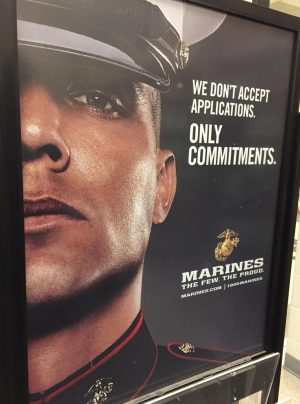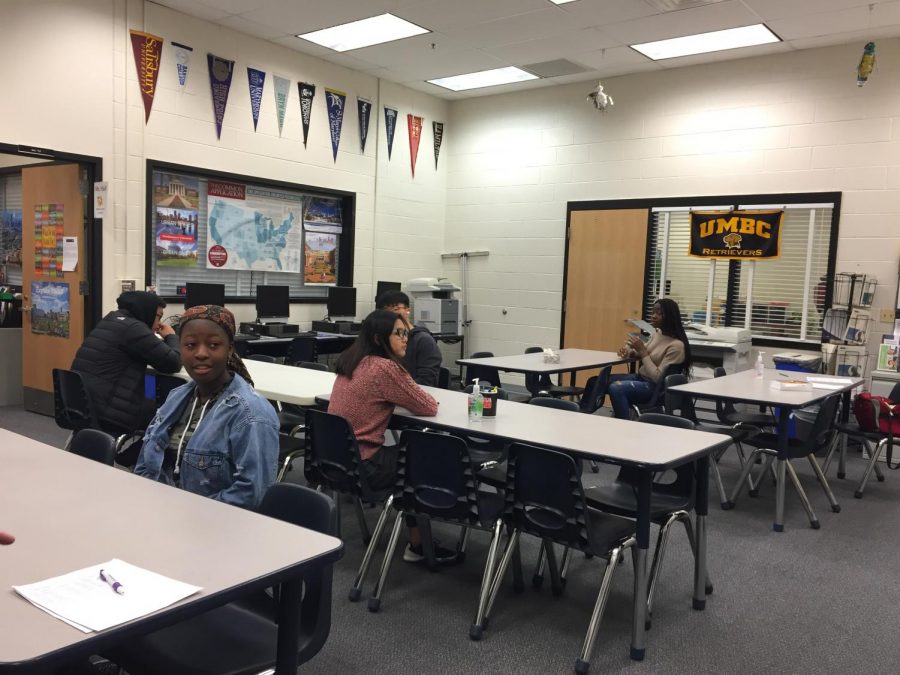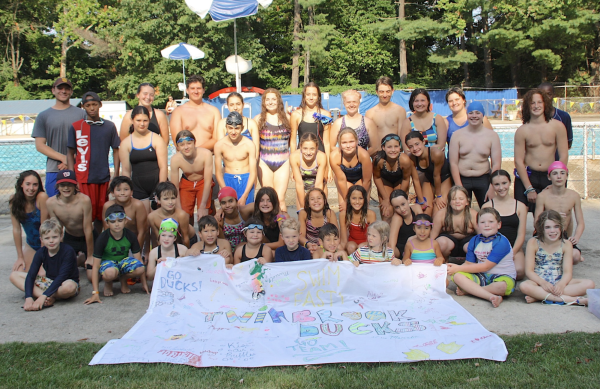Students serve their country by joining the military
Students wait to take the Armed Services Vocational Aptitude Battery (ASVAB) test in the Career Center on Thursday, March 12, 2020.
For the 244 years that the United States has been a country, it has been one of the highest honors to protect and defend the nation. From the Civil War to the two World Wars to Afghanistan, brave men (and now women) step up to do something not everybody can do: risk their lives for people they do not even know.
What is even more astounding is that people as young as high school students take the leap in enlisting in the military. While most seniors prepare to attend college, not all do. Some students even choose to enroll in ROTC programs and other military academies, which will ultimately give them a position as an officer in the military.
According to a summary of MCPS student statistics from the 2016-17 school year, fewer than 5 percent of students decided to enlist in the military in both Richard Montgomery and the county as a whole. The bottom line is, not many high school students join the military instead of going to college. So what brings the people who do choose this path, to their decision?

A poster in the Career Center advertises joining the Marine Corps after high school.
For senior Abbey Geary, the reason is personal. “I’ve always been someone that’s been really passionate about serving others. Like I volunteer in my community and I feel like that’s kind of my purpose. And since the military has been in my family, it kind of inspired me to pursue serving others in this way of serving the country and the people here.” Abbey applied to the Naval Academy earlier this summer and is now just waiting for a response. She is not enlisting quite yet, but being accepted to the Naval Academy would take her just a step closer.
For those who may not know much about the Naval Academy, here is a description from Geary herself: “The Naval Academy, which is a four-year college, [is] basically where you have both military responsibility, but also you’re pursuing a major like you would at any other college … you also have to serve in the military, in the Navy or the Marines for five years after you graduate,” she explained.
If she gets into the academy, Geary plans on following in the footsteps of her father, who served as a lieutenant on a submarine. After her time at the academy, she will then go on to serve in the Navy, in aviation or on a ship.
To fully understand this career path, it is important to know the differences between ROTC programs and military academies. A student in an ROTC unit essentially lives the life of a standard college student, with ROTC lessons on the side. A college-level military academy is an institution of higher learning of all things military. The two programs do, in the end, lead to the same result of having to serve after leaving the program.
There are many reasons why students enlist or enter ROTC programs. One big motivation for many students is being able to attend college at some point without having crushing debts weighing them down. With the cost of college always on the rise, the tuition assistance offered by the military as a benefit from service is the only way many students may be able to afford to go to college.
Other reasons students may choose this career path include family tradition, to find themselves, to travel, to get experience in many fields and simply just out of the kindness of their hearts.
Though the enlistment process is a little different for everyone, the basics are the same. Upon deciding to enlist, one must visit a Military Entrance Processing Station (or MEPS) to begin the process, which includes the Armed Services Vocational Aptitude Battery (ASVAB) tests to help the individual identify which army jobs would best suit them based on their qualifications, physical exams, career counseling to help pick which branch of the military to join, the enlistment agreement, the enlistment oath and finally, basic training.
At the end of the day, joining the military right out of high school is not something for everyone. It takes a great deal of commitment, determination and hard work. But, the people who do choose this alternate career path find it fulfilling and as said by Geary, “The opportunity it brings me to serve other people is something I want to continue doing.”
Your donation will support the student journalists of The Tide, Richard Montgomery High School's student newspaper. Your contribution will allow us to purchase equipment and cover our annual website hosting costs.

Elfreda is full of energy and loves spending time hanging out with friends and making people laugh. She is going on her second year of writing for the...









